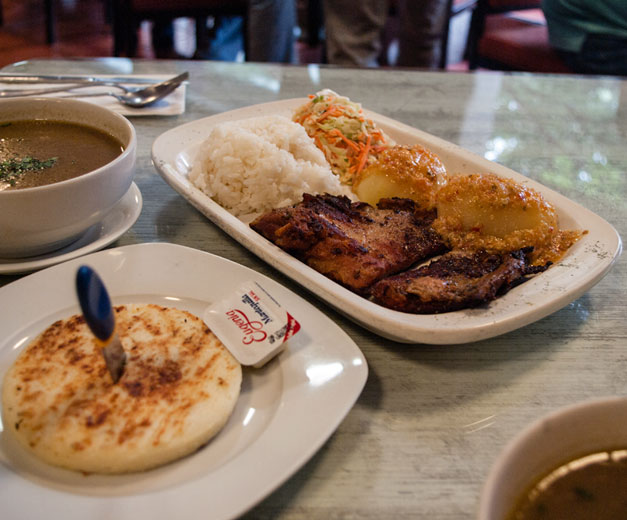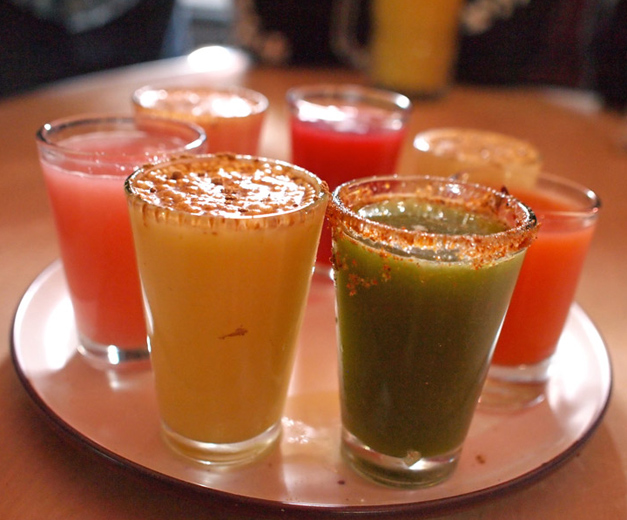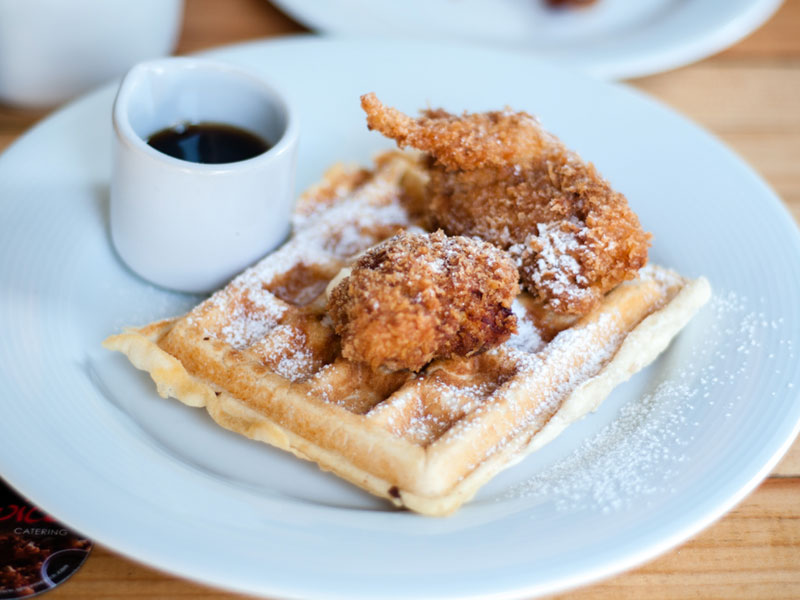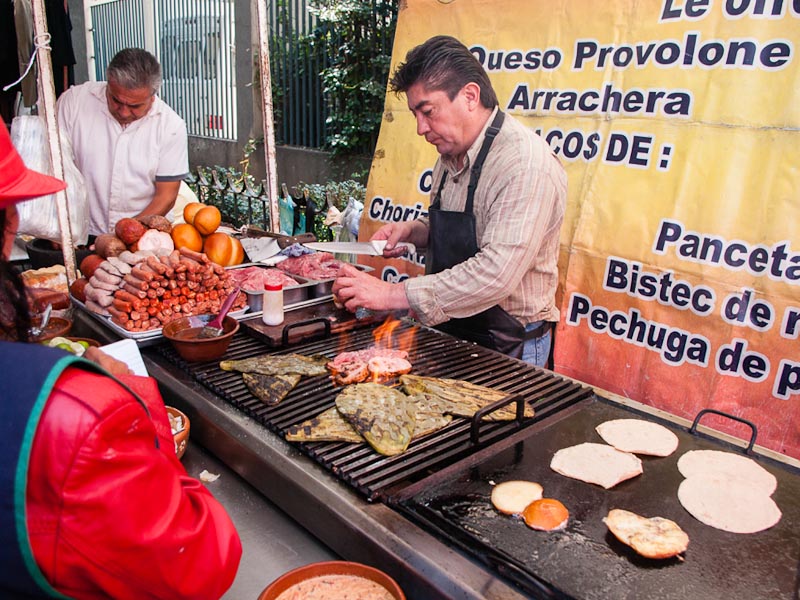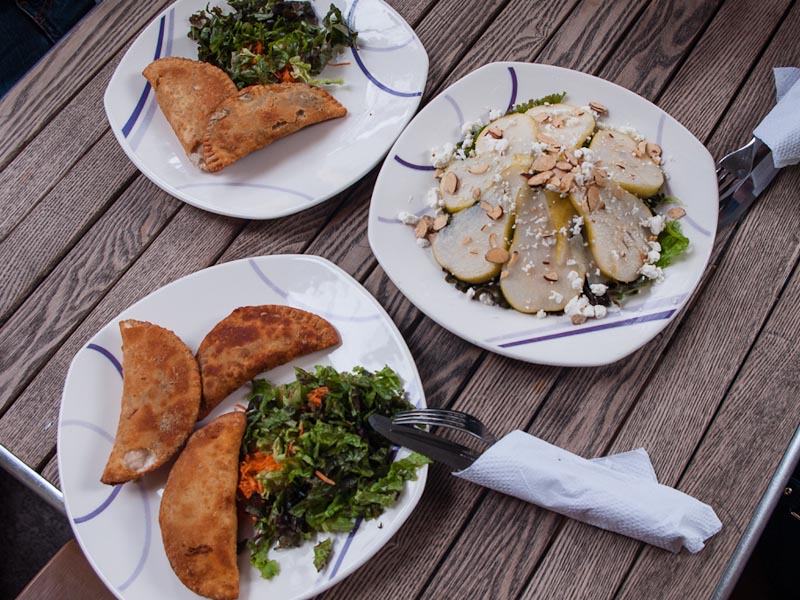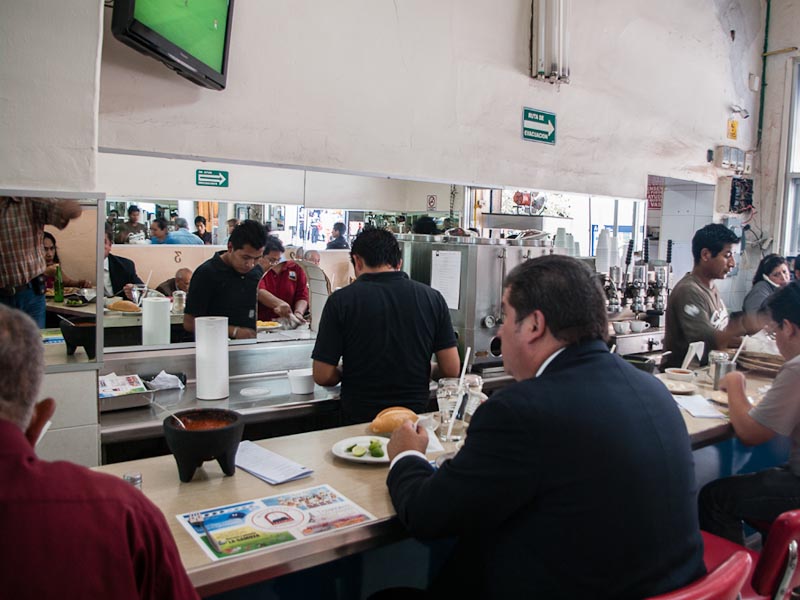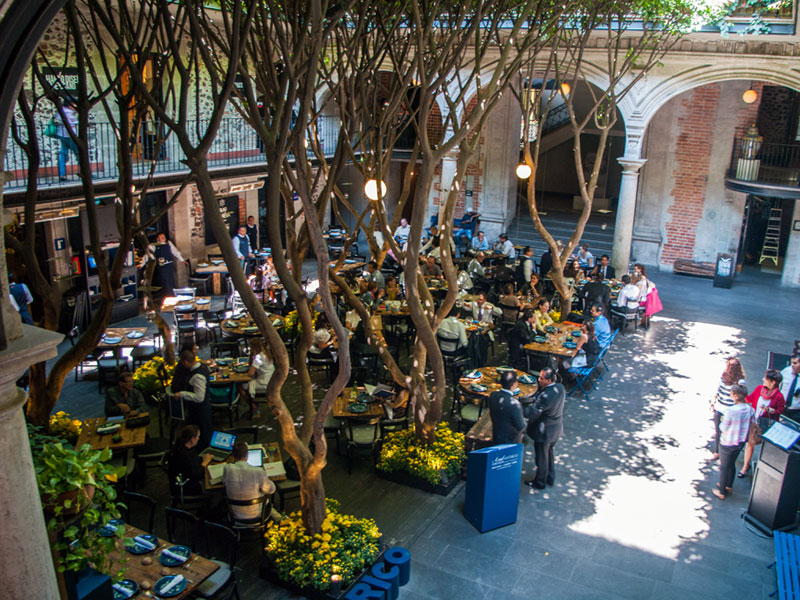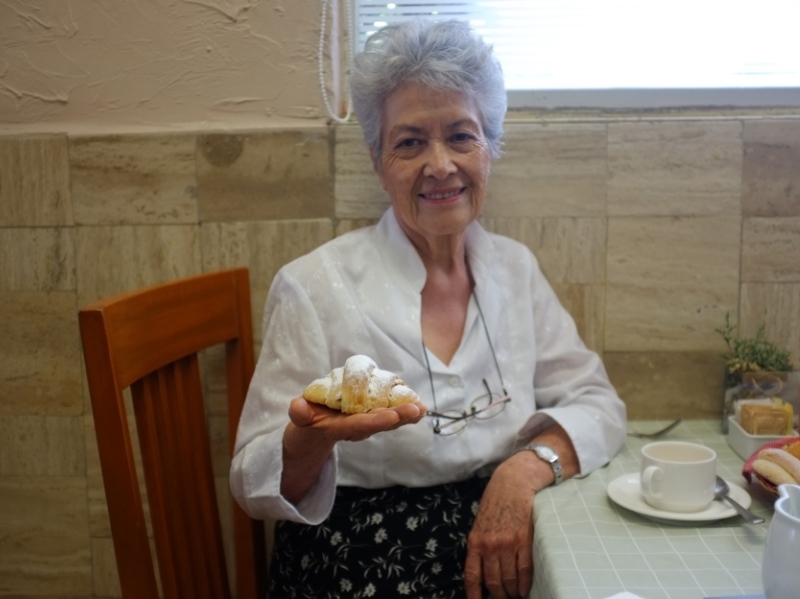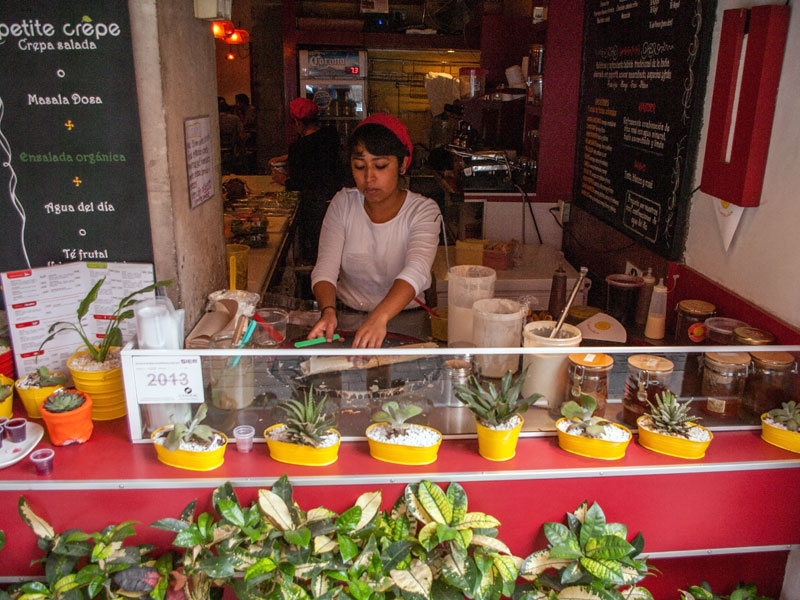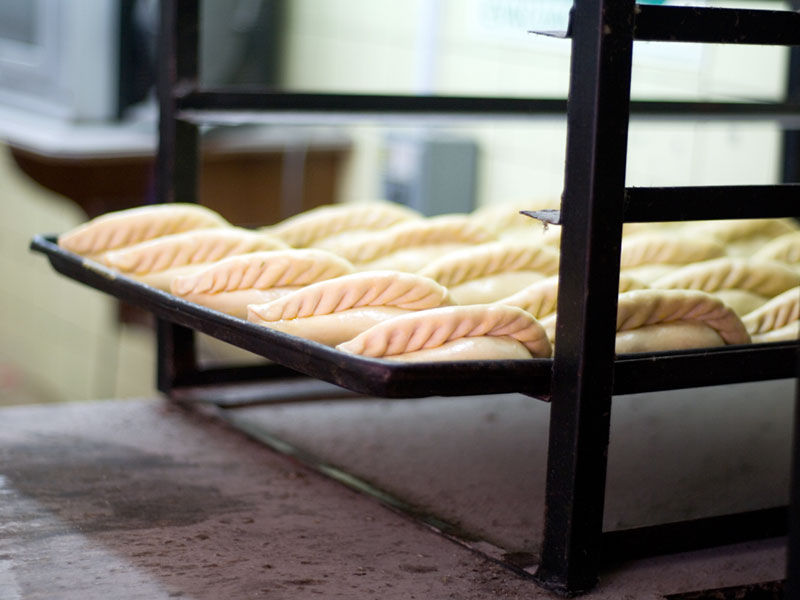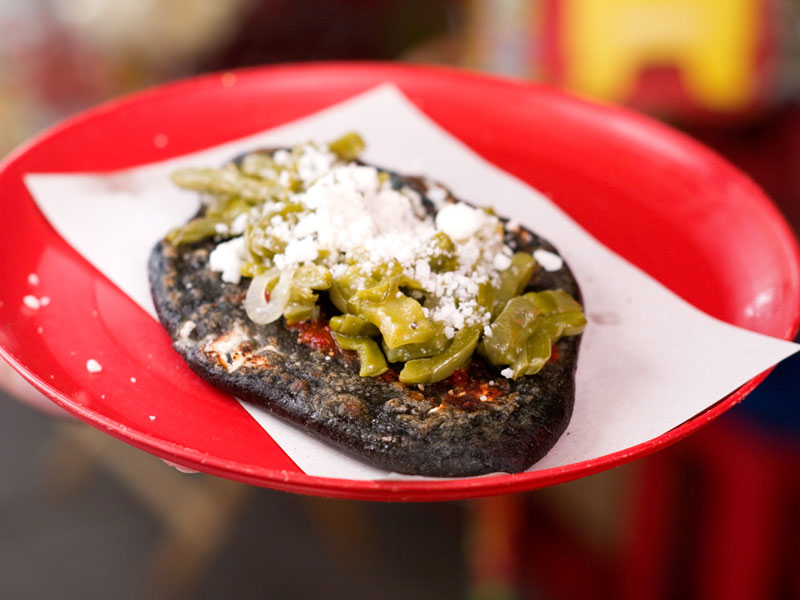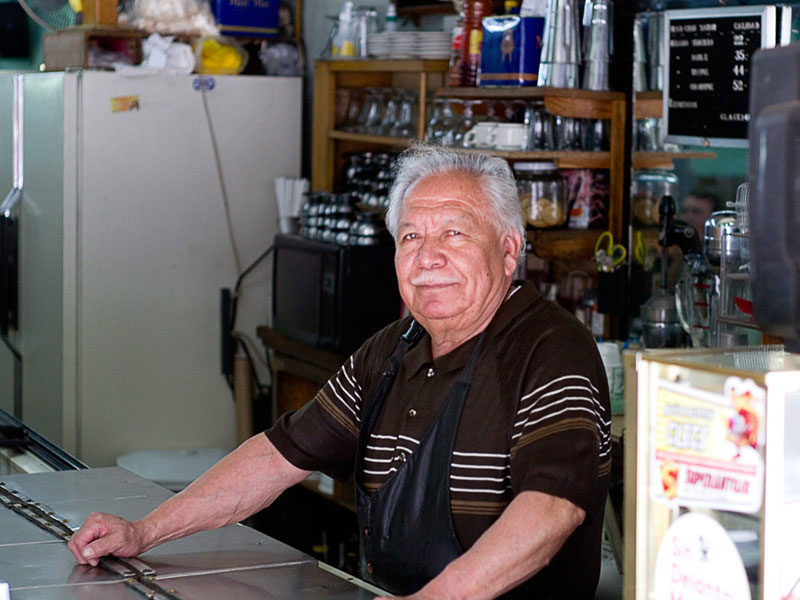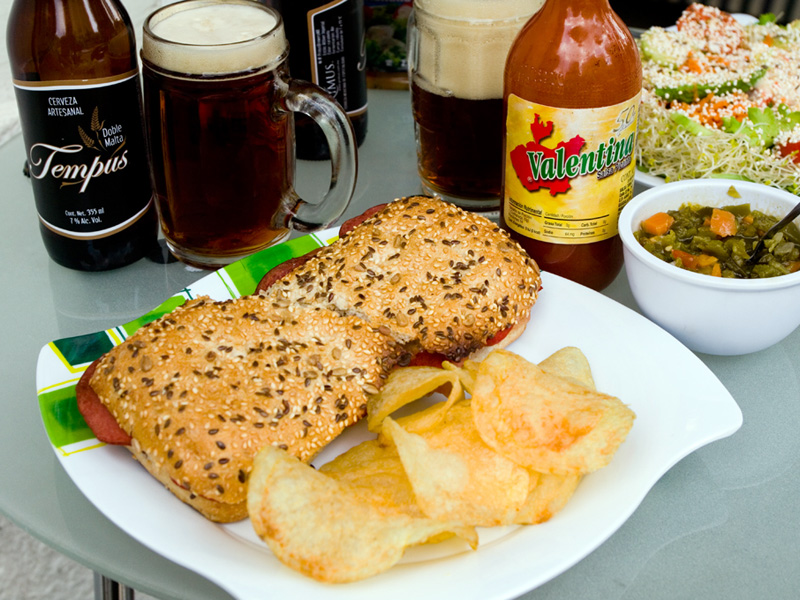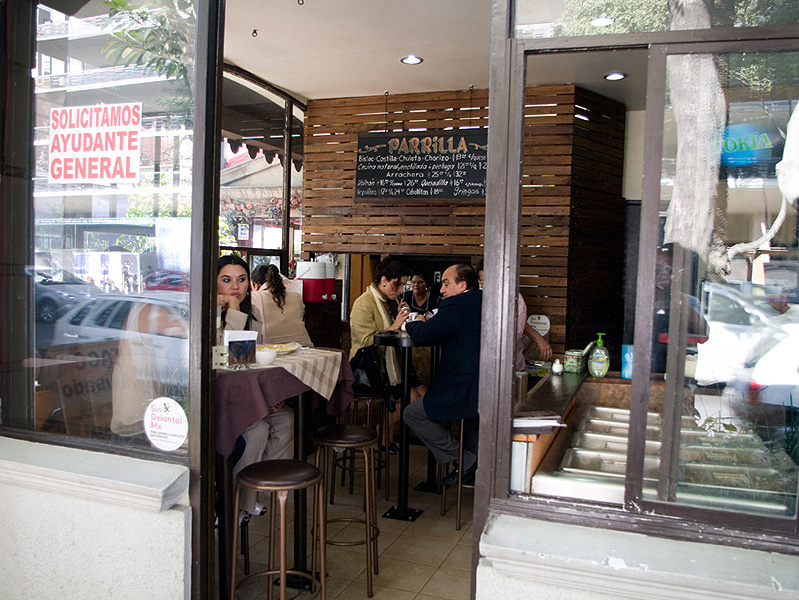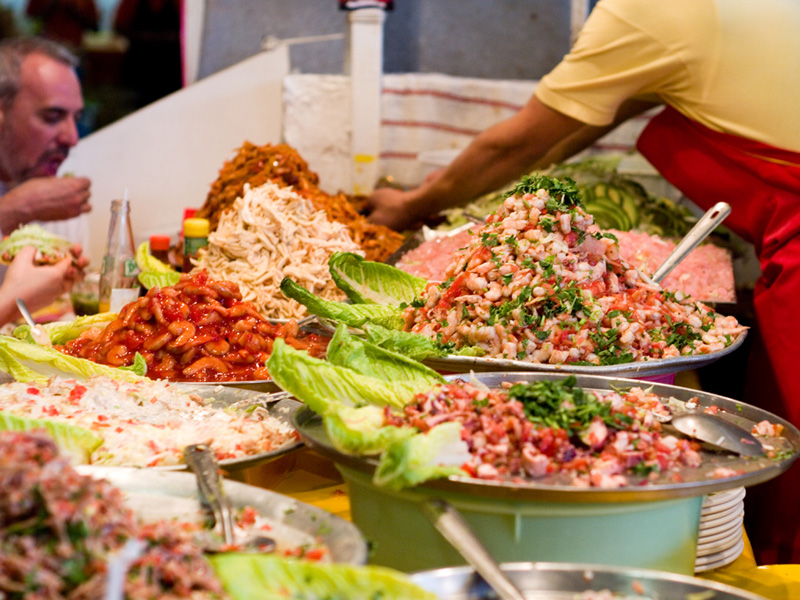We can't find the internet
Attempting to reconnect
Something went wrong!
Hang in there while we get back on track
Search results for "Ben Herrera"
Mexico City
La Ciénaga: From South of the Border
Immigration between the U.S. and Mexico has long been thought of as a one-way phenomenon, but global economic upheaval and other factors have made the neighbor to the south the new Land of Opportunity. As a recent New York Times article put it, for the first time “more Americans have been added to the population of Mexico over the past few years than Mexicans have been added to the population of the United States.” Nowhere is this more apparent than in Mexico City, where immigrants come not just from the U.S. or other parts of Mexico, but also Argentina, Spain, Korea – everywhere, really. And these immigrants have brought with them a new world of excellent dining options.
Read moreMexico City
Pulque: A Strange Brew's Revival
Milky, tart, viscous and slightly foamy. At first glance and sip, there’s little to explain why pulque – a mildly alcoholic drink made by fermenting the fresh sap of certain types of maguey, the same plant used for making mezcal – has remained a trusted companion to Mexican drinkers since Aztec times. Pulque, actually, has not only survived, but, after decades of losing ground to beer and soft drinks and their high-priced marketing campaigns, this workingman’s brew is making a comeback. New pulquerías are popping up in hip Mexico City neighborhoods and attracting a younger crowd while old pulquerías, which endured some lean times, are seeing an influx of new customers, who now sit side-by-side with older generations of loyal pulque drinkers. Nobody really seems to know why the previously unheralded nectar has been getting this much attention in the last few years, but several places around town have been capitalizing on this new trend with great success.
Read moreMexico City
Spice Everywhere: Brunch, from North of the Border
Editor’s note: We regret to report that Spice Everywhere has closed. It didn’t take long after arriving from Chicago a decade ago for Juliet Lambert to figure out what was the gaping hole in Mexico City’s otherwise rich culinary scene: an American-style brunch spot. The chef went on to start Spice, a catering company, but earlier this year was able to come up with the answer to the brunch problem when she launched Spice Everywhere, a roving pop-up that is bringing hashbrowns and waffles to the land of the tortilla.
Read moreMexico City
El Parrillón: Gaucho Tacos
Tacos are everywhere in Mexico City, and though the options are many – chicken, al pastor, carnitas, carne asada – the basic ingredients tend to be the same wherever you go. That’s why, as we were walking the aisles of Tianguis La Raza on a Sunday morning, El Parrillón caught our attention.
Read moreMexico City
Comichurros & Empanadas: Deep-Fryer Superheroes
Update: This spot is sadly no longer open. On a quiet street in Cuauhtémoc, just blocks away from some of Mexico City’s most recognizable landmarks, a slick, colorful sign and unusual name – Comichurros & Empanadas – call out loudly for attention. Inside, the place buzzes with youthful energy and social media and branding savvy: the walls are boldly decorated with floor-to-ceiling drawings of superheroes, onomatopoeic sound effects both old and new (“BAM! THWOK! CHURROS!”) and signs offering customers free churros in exchange for likes, check-ins and tweets. This is an eatery for the 21st century.
Read moreMexico City
La Corte: Court of Appeal
Walking into La Corte is like stepping into the 1950s. At this no-frills fonda, located in downtown Mexico City by the Supreme Court (hence the name), customers perch on red vinyl seats at laminate tabletops or along the counter and read their newspapers, the tableware and lighting are utilitarian, and the décor is minimal: just a few televisions with fútbol on and the sound off. The color flat screens might be the only indication that this is, indeed, the 21st century.
Read moreMexico City
Tacomix: Pit(less) Bosses
Making mixiote takes some effort. On its home turf in Central Mexico, the dish is made by taking chicken, beef or mutton that is seasoned with pasilla and guajillo chili peppers as well as flavorings like thyme, cumin, bay leaves, oregano, onion and garlic, wrapping it in individual portions in maguey leaves and then slow-cooking the bundle in a pit, preferably overnight. But how about in Mexico City, a crowded metropolis where it’s not always possible to build a BBQ pit in the ground, or to obtain maguey leaves, which are both expensive and difficult to work with?
Read moreMexico City
Ask CB: What Are Aguas Frescas?
Dear Culinary Backstreets, I’ve heard about drinks in Mexico called “aguas frescas,” but what exactly are they? Visitors to Mexico are sure to encounter aguas frescas, a popular category of drinks that are ubiquitous at food stands and eateries around the country. These colorful beverages, whose name literally means “fresh waters,” come in a variety of different flavors depending on the main ingredient, but generally all are made by mixing a fruit juice with water and sugar.
Read moreMexico City
Cactus Popsicle? Touring Mexico City's Ice Cream Scene
In Mexican cuisine, sweets are for the most part simple treats that are enjoyed at the park, market or beach, such as caramelized fruits and vegetables, blocks of nuts or amaranth seeds held together with honey, or small rice paper cakes filled with honey. The common denominator of most of these sweets is their simplicity. When it comes to ice cream and other frozen delights, however, the country truly shines, with an astounding variety of cold treats to please sweet tooths of every persuasion.
Read moreMexico City
Azul Histórico: From the Files of the Culinary Detective
There wouldn’t be much of a revived culinary scene in Mexico City without chef Ricardo Muñoz Zurita. A kind of recipe detective and writer of several well-regarded Mexican cookbooks, including the superb Diccionario Enciclopédico de Gastronomía Mexicana, he has been even more successful in his restaurant ventures. After his humble Café Azul y Oro at the National Autonomous University of Mexico (UNAM) received rave reviews, he expanded on its concept – a menu of traditional regional Mexican cuisine based on sometimes forgotten recipes he had gathered through his field research – by opening a larger restaurant in the hip Condesa neighborhood in 2010. Two years later, he opened a third location in a beautifully restored building in the Centro Histórico, which has proven to be his most successful venture yet.
Read moreMexico City
Restaurante Nicos: A Family Affair
Restaurante Nicos got its start back in 1957, when María Elena Lugo Zermeño opened a small cafeteria in the middle-class Colonia Clavería neighborhood offering family recipes passed down through the generations. Over the years, the cafeteria evolved into a full-scale – and well-known – restaurant, one that pulls in customers from across the city with its excellent dishes and warm, inviting atmosphere.
Read moreMexico City
Mexico City’s Top 5 Street Foods
Editor’s note: This feature from Mexico City is the second installment in our street food series this week, highlighting the best streetside eats in each of the cities Culinary Backstreets covers. 1: Pambazos The pambazo is a Mexican sandwich that’s similar in style to the more familiar torta, but not nearly as ubiquitous. Most commonly found at weekly street markets like Sullivan, pambazos are made with hard, white bread rolls soaked in guajillo chili sauce that softens the crust and gives it a warm, orange-red hue. Once dried, the bread is sliced in half and then filled with a generous portion of diced potatoes, chorizo, lettuce, sour cream and sprinkled queso fresco. The bread is quite fragile, so eating the concoction can be somewhat challenging. From the first bite the pambazo starts to disintegrate, and by the end we’re usually scooping up the heavy mess with our fingers. It’s all worth it, though, as the light hint of chili in the bread and the hearty ingredients inside give the dish the same satisfying and belly-filling pleasure that comes with a good bowl of thick stew.
Read moreMexico City
Corazón de Maguey: Mezcal Goes Upscale
The sap of the spiky maguey plant has long been used by the indigenous peoples of Mexico to prepare pulque, a milk-colored, viscous drink that has roughly the same alcohol content as beer. When they arrived in Mexico, the Spanish were introduced to pulque. Used to imbibing harder stuff, however, the conquistadors experimented with distilling a mash made out of the maguey plant, in the process inventing the beguiling spirit known as mezcal. Previously a liquor considered the province of the poor and working classes, mezcal has in recent years become one of the trendiest and most popular alcoholic drinks in Mexico, with more than 150 different brands now on the market. (Tequila, made from blue agave – a kind of maguey – and produced within a specific region of Mexico, is the best-known member of the mezcal family.) The rise in mezcal’s popularity has led to a proliferation of mezcalerías, wine bar-like spots that specialize in pouring the drink. In Mexico City in particular, mezcalerías have popped up in nearly every neighborhood, and their numbers keep growing.
Read moreMexico City
La Petite Crepe: French for Tortilla
Update: This spot is sadly no longer open. As diverse Mexican food is, there are times when we just have a craving for something different, which is why we were delighted recently to discover La Petite Crepe in the Centro Histórico, a tiny eatery producing delicious crepes and tasty beverages with an international pedigree.
Read moreMexico City
Hilaria Gastrobar: A New Look in the Old City
Update: This spot is sadly no longer open. Until not long ago, Francisco I. Madero was a typical – and rather uninviting – street in Mexico City’s Centro Histórico, uneven and full of potholes, with narrow sidewalks. The avenue was constantly clogged with car traffic trying to make its way to the Zócalo plaza in the center of the neighborhood. In short, it was a mess.
Read moreMexico City
Las Laguneras: The Right Stuff
Update: This spot is sadly no longer open. Come Sunday, we often find ourselves strolling through leafy Parque Sullivan, which hosts Mexico City’s largest outdoor art market. The art here ranges from modern to whimsical, abstract to landscapes, created by artists who no doubt have dreams of being the next Diego Rivera or Frida Kahlo. When we get hungry, we usually head over to nearby Sullivan Market to get a taste of the culinary artistry of the food vendors working there. But on a recent Sunday, we decided to follow the advice of friends and try something new in the neighborhood: the gorditas over at Las Laguneras.
Read moreMexico City
Cruz del Milagro: The Magnificent Seven (Moles)
Editor's Note: Sadly, this spot is now closed. Sometimes bureaucracy can be a blessing in disguise. Cruz del Milagro, an informal restaurant in the popular nightlife area of Zona Rosa, was originally intended to be a simple mezcalería, a place where owners Dora Jiménez and daughter Diana Herrera, the third and fourth generation in a line of mezcal producers, could share the family brand, El Rey Zapoteco Mezcal, with the growing base of mezcal aficionados in Mexico City. They were informed, however, that because of a city law, they would either have to also serve food or open a traditional full bar. Fortunately, they chose the first option and decided to focus on the specialties of their home state of Oaxaca, resulting in a menu that’s far from being an afterthought.
Read moreMexico City
In Mexico, a Cuisine Born from Corn
Humanity came from corn, or so says the Mayan creation story, the Popol Vuh. After creating the earth and animals, the story goes, the Maker decided to create beings in his likeness. After failing twice with dirt and wood, the Maker formed man and woman out of the “nourishing life” of ground corn. And so began Mexico’s deep relationship with one of the most widely used crops in human history, one that seems to be present in almost every aspect of Mexican cooking.
Read moreMexico City
Pastes Real de Pachuca: Hot Pocket Goldmine
Update: This spot is sadly no longer open. For weeks we had been passing by a small venue that filled the sidewalk with the heavenly scent of butter and pastry dough, before we finally had the chance to stop in and investigate. The source of the intoxicating aroma turned out to be Pastes Real de Pachuca, a neighborhood bakery in middle-class Colonia Tabacalera that makes excellent empanadas and pastes, a type of pastry that’s a specialty of Mexico’s Hidalgo state but hard to find in Mexico City.
Read moreMexico City
El Profe: Barbacoa Master Class
One of our favorite markets in Mexico City, Mercado Jamaica is a fantastic destination any time of the year, offering everything from festive Christmas decorations to a large selection of fruits and vegetables. After the markets of Xochimilco, Jamaica is also one of the city’s best flower markets, with block-long aisles filled with freshly cut flowers and plants of almost every imaginable color and type. But as much as we love getting lost in the sweet scents of these green alleyways, what keeps us coming back to Jamaica is El Profe, an excellent eatery inside the market that specializes in barbacoa. El Profe ("The Prof") looks less like your typical market food stand and more like a mini restaurant, with small brass chandeliers hanging from the ceiling that provide more in the way of ambiance than actual light. Waiters and cooks in matching blue uniforms hustle and bustle around the customers, who come and go from the counter at a steady pace.
Read moreMexico City
Coox Hanal: Peninsular Gastronomy
The holiday season is one of the more subdued times of the year in Mexico City. Many people leave the city for vacation or to visit family and friends in other parts of the country. We, however, tend to stick around more often than not, traveling around the city and enjoying the relative peace. That’s how we happened upon Coox Hanal, a restaurant hidden inside a century-old building in the Centro Histórico that specializes in the cuisine of the Yucatán, the peninsula that juts out into the Gulf of Mexico and the Caribbean Sea like a hitchhiker’s thumb.
Read moreMexico City
In Praise of the Fonda, Mexico’s Mom & Pop Restaurant
For as long as I can remember, I have loved mornings, a preference that likely – perhaps counterintuitively – originates from my experience working bright and early at my parents’ fonda. Almost every day, we would arrive around 7 a.m. to prepare the day’s menu, slicing vegetables for salsas, putting together moles, boiling chicken and arranging everything necessary for the daily rush of customers. The warmth and aromas rising from the large clay pots filled the air and never failed to make my mouth water. It was a scene that had been repeating itself since my grandfather bought our fonda back in the early 1960s.
Read moreMexico City
Sullivan Market: Food Vendor Bender
Markets in Mexico City are as integral a part of the culture as mariachi music and tacos, providing a place for neighbors to come together for shopping, gossip and family outings and playing a key role in keeping the social fabric tightly woven. While most neighborhoods have their own brick-and-mortar locations, their street markets are far more colorful. These crowded, boisterous shopping areas – some so large that their colorful tarp roofs can been seen on satellite photographs, stretching for miles – are also an essential component of the city’s culinary scene.
Read moreMexico City
Best Bites of 2012: Mexico City
The past year has been a very good one for food in Mexico City. We’ve had a wonderful time exploring new restaurants, tracking down exciting dishes and meeting great people along the way. There have been so many memorable moments over the past year that it was hard to sit down and come up with a list of the ones that really stood out the most. Through debate and discussion (and some revisits), we narrowed down the worthy field to our top favorites. Here are our Best Bites of 2012 from Mexico City. El Pozole de Moctezuma First up on our best food experiences of the year would have to be the pozole at El Pozole de Moctezuma. Located near Metro Garibaldi, the building is nondescript and shows no sign of the deliciousness that lies within, so if we hadn’t been taken there by a friend, we never would have known about it. But what a discovery! The friendly staff showed us exactly how to build the perfect bowl of pozole, from choosing the color and flavor of the broth to adding oregano, chili powder, lime juice and, of course, a splash of mezcal. A bowl of soup never tasted so good or filled us up more satisfyingly than that at El Pozole de Moctezuma. Best of all, the place is a long-term neighborhood fixture that celebrated its 65th anniversary in 2012, a fact that bodes well for future visits.
Read moreMexico City
La Especial de París: Vanilla Thriller
Mexico City is probably not the first place one thinks of when it comes to ice cream. Enchiladas and tacos, sure, but ice cream? In fact, the city has quite an established ice cream scene, with spots in nearly every neighborhood. La Especial de París, an ice cream parlor on the edge of Colonia San Rafael, stands out as a family-owned venue that – unlike many of its competitors, which have increasingly turned to selling mass-produced dairy products – still makes all its ice cream the old-fashioned way, by hand and with fresh, all-natural ingredients.
Read moreMexico City
La Vaca de Muchos Colores: The House of Brews
In Mexico, sandwiches generally come in the form of the torta, usually made out of a white bread roll known as a bolillo that has been sliced in half and then filled to the brim with meat, avocado, tomato, onion and sliced jalapeño peppers. In Mexico City’s San Rafael neighborhood, however, a family-owned sandwich shop called La Vaca de Muchos Colores is doing its best to expand the city’s sandwich scene.
Read moreMexico City
Tacos & Deli: Smaller Is Better
To call Tacos & Deli, a one-year-old family-owned spot in the popular nightlife district of Zona Rosa, small would be an understatement. The main dining area contains six little tables, a tiny kitchen, a taco station and a cashier stand, all of which are squeezed into a micro-sized area that in many other restaurants would probably end up being used as a broom closet.
Read moreMexico City
Mexico City: State of the Stomach
Editor's note: This week, Mexico City joins Culinary Backstreets as our fifth city. We're delighted to launch Culinary Backstreets: Mexico City and look forward to sharing our culinary discoveries in this captivating metropolis. The vast megalopolis of Mexico City is one of the most misunderstood and misrepresented cities in the world. Adventurous tourists are often surprised to discover a vibrant national capital filled with incredible architecture, beautiful weather and amazing food. In some ways, this scene has been playing out for 500 years.
Read more